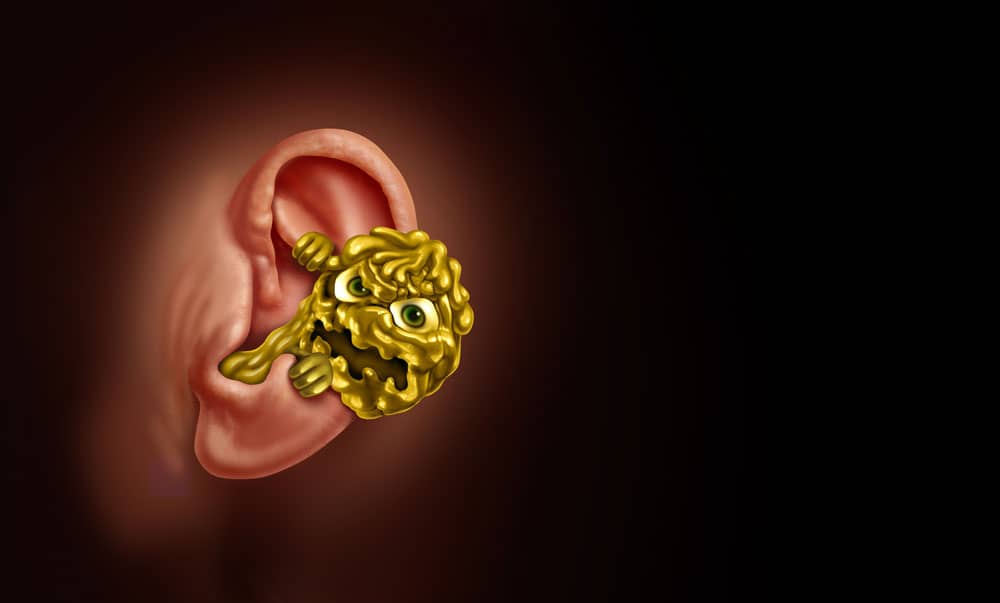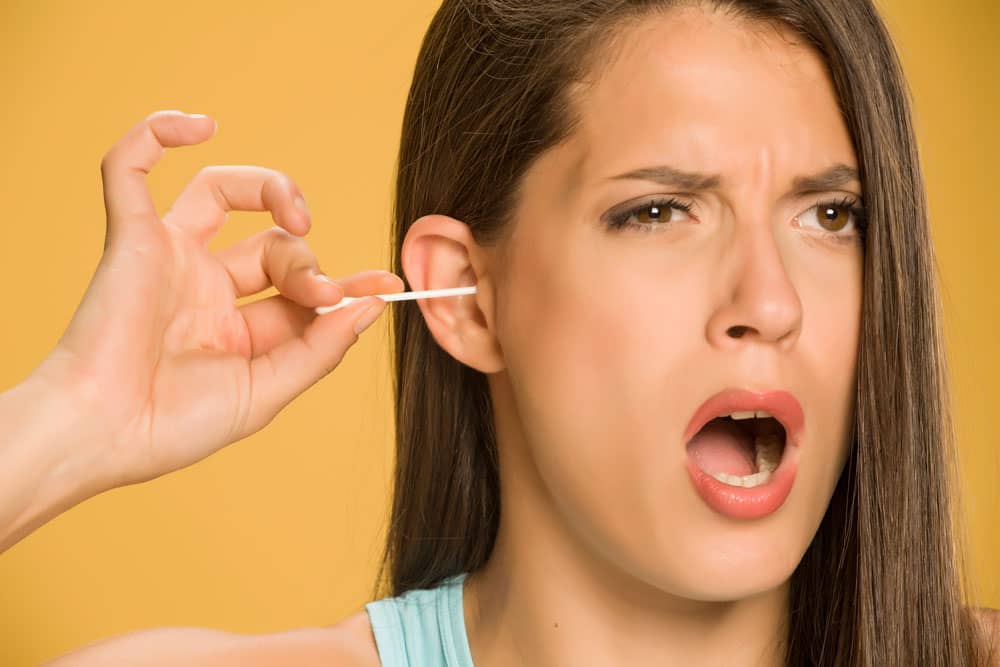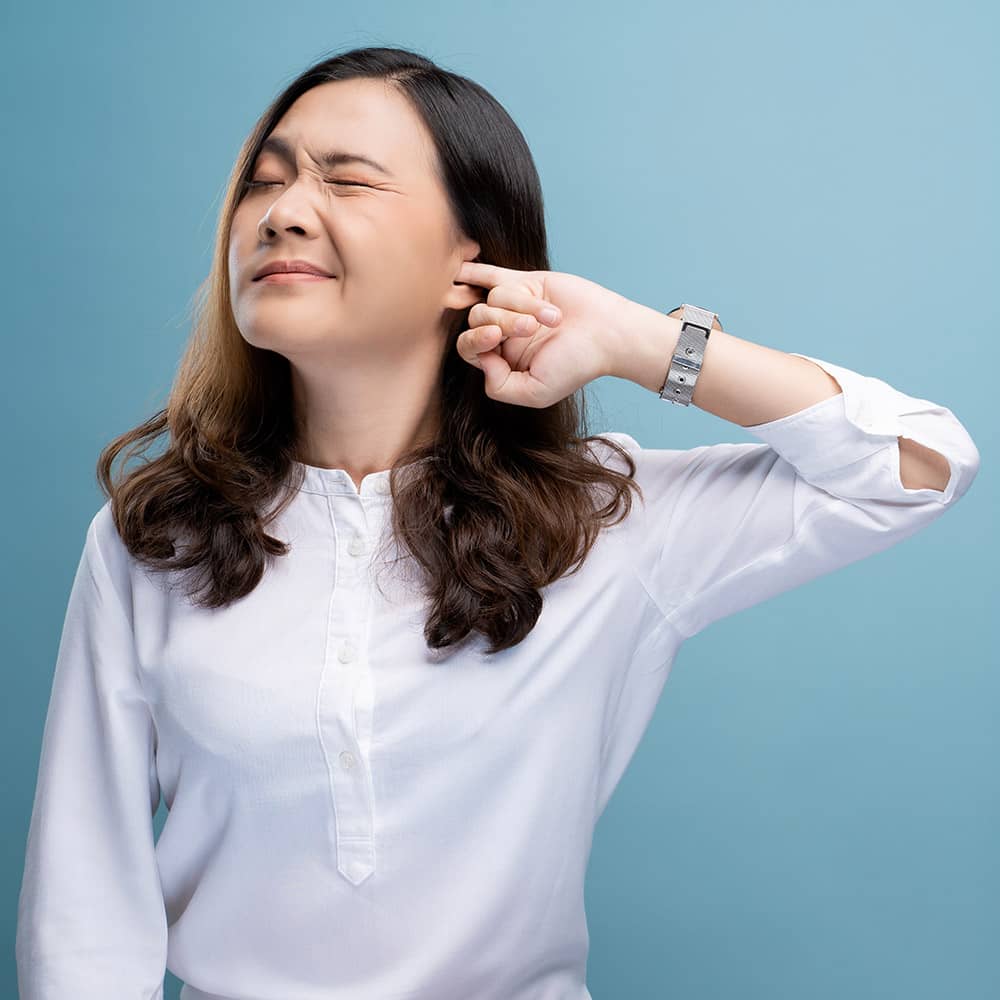You may not have thought about it, but cerumen (commonly called earwax) is essential to the well-being of our ears. It helps them by providing protection and lubrication, ensuring that they don’t feel itchy or dry. What is more, earwax has antibacterial properties, essentially enabling your ears to self-clean, filtering out dust and debris and preventing them from getting deep inside of the ear canal. When you talk, chew, or otherwise move your jaw, the wax is directed towards the ear opening where it will usually dry up and fall out.

There are cases, however, where an excessive amount of earwax builds up inside the ear and causes a blockage. This can happen either in one or both ears and the symptoms are various. They might include pain in the ear, a feeling of fullness, ringing, and itchiness. Hearing loss could also be present, as well as an odour or a discharge leaking out of the ear. In some cases, a cough and/or dizziness are also a sign of earwax blockage.
If untreated, such a condition can lead to complications. An ear infection might develop as a result of impacted earwax which, in rare cases, spreads to the base of the skull, causing meningitis or cranial paralysis. If the earwax starts pushing towards the eardrum, or tympanic membrane, it can cause vertigo and nausea.

Clearly, the symptoms of earwax blockages and the conditions that may follow are extremely uncomfortable and even dangerous. But how should you go about removing the wax?
Many people impacted by excessive earwax are tempted to try removing it on their own. It is very important not to insert any objects inside the ear, including cotton swabs, since doing this will simply push the wax further into the ear, packing it deeper. Additionally, inserting any object whatsoever in your ear could seriously harm its inside which is an incredibly gentle and sensitive area. Ear candling is also not a safe, nor an effective option. According to studies, candles do not successfully extract wax and can cause injury.

In case the issue is not serious, but you still feel like your ears are producing too much wax, there are some safe steps that you can take to clean them. You could use a washcloth to clean the outside of the ears very gently and carefully. However, make sure you do not attempt to insert the corners of the cloth inside the ear. Another option is to use baby oil, putting a few drops in the ear so that the ear wax can soften.
Earwax blockages are, however, best handled by professionals. The most appropriate course of action is to see a doctor as soon as symptoms occur in order to confirm whether earwax blockage is the issue in the first place as the symptoms might be a result of another condition. In case earwax blockage is found to be the cause, hearing care professionals may either use a single method or a combination of several ones to remove the wax. The different ways in which ear wax can be removed by professionals are as follows:
Microsuction
Also known as ear vacuuming, microsuction is the earwax removal technique most commonly recommended by doctors. It is performed by placing a slender nozzle into the ear and using a miniature vacuum to siphon out excess wax. The process takes between 10-25 minutes and once the wax is dislodged, the audiologist removes it either using the vacuum itself, a small pair of forceps, or a specialized tool knows as the ‘Jobson Horne’.
Endoscopic Microsuction
A miniature vacuum cleaner is used with an endoscope camera fitted to it, which gives a highly detailed view of the ear canal and eardrum, making the procedure both easier and safer.
Manual Removal
If the ear wax build-up is quite solid, manual removal can be helpful. It consists of using specialized tools to remove the ear wax from the outer part of the ear canal. It is often used in combination with more advanced techniques, like Water Irrigation.
Water Irrigation
Previously known as ‘ear syringing’, this updated version of the irrigation method employs a specialised electronic tool called an ‘ear irrigator’ which sprays water directly into the ear. This helps loosen and flush out impacted wax. The ear irrigator controls and maintains the flow and temperature of the water ensuring a precise procedure and aiming for the wall of the ear in order to avoid the eardrum as much as possible.
Are you suffering from uncomfortable earwax buildup? Fret not- we at Hear4U offer all four methods of earwax removal at amazing prices! Click here to book your appointment with us today.



